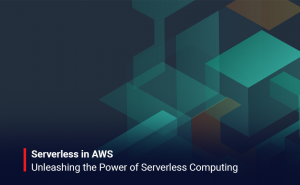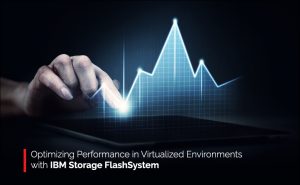The IBM FlashSystem series is a line of enterprise-grade all-flash storage arrays designed to provide modern data centers with high-performance, low-latency, secure storage solutions, and outstanding reliability. With IBM FlashSystem solutions, organizations can lower their administrative efforts by up to 60% by integrating and managing storage systems into a single pool for increased operational efficiency.
The utilization of all-flash storage, which offers powerful performance improvements over traditional hard drive storage, is at the heart of the IBM FlashSystem. Because there are no spinning disks to slow things down, all-flash storage can provide lightning-fast data access and transfer times, allowing applications to function at their peak efficiency.
These solutions are built on industry-leading technologies such as NVMe, FlashCore, and Spectrum Virtualize to give great performance, efficiency, and scalability to organizations of all sizes. Let us look into further:
NVME:
NVMe or Nonvolatile Memory Express, is a storage standard built primarily for flash-based storage arrays. It connects the storage array and the server via a low-latency, high-bandwidth interface, allowing for faster data access and increased application performance. NVMe technology is used in the IBM FlashSystem family to deliver the fastest and most efficient storage access available.
FlashCore:
IBM’s FlashCore flash storage technology is designed to give consistent and predictable performance even under intense workloads. FlashCore has a high level of endurance, reliability, and security, making it an ideal solution for mission-critical applications requiring high availability.
Spectrum Virtualize:
Spectrum Virtualize is IBM’s software-defined storage technology, which enables organizations to pool and manage storage resources across multiple systems, data centers, and cloud environments. This technology provides the flexibility and scalability required to adapt to changing business requirements, while also simplifying storage management and reducing costs.
The IBM FlashSystem Family:
The FlashSystem family includes a variety of all-flash storage arrays, such as the IBM FlashSystem 5000, IBM FlashSystem 7200, and IBM FlashSystem 9200. These technologies are designed to enhance mission-critical application performance, data center efficiency, and overall business agility.
By utilizing predictive analytics and AI-infused health monitoring capabilities to optimize storage, IBM FlashSystem helps organizations achieve a 43% boost in storage cost efficiency. In the following sections, let’s take a quick look at these flash storage arrays in more detail.
IBM FlashSytem 5000:
This mid-range all-flash storage array is designed for high-performance, low-latency applications and smooth data delivery. It supports a range of NVMe-based drives, enabling faster data access and improved application performance. The FlashSystem 5000 also includes advanced data reduction features, such as deduplication and compression, to reduce storage costs and increase efficiency.
IBM FlashSystem 7200:
The IBM FlashSystem 7200 is an all-flash storage array designed for high-performance workloads and applications that uses IBM’s FlashCore technology to provide stable and predictable outcomes even under intense workloads. To improve data center efficiency and minimize expenses, the FlashSystem 7200 also features a suite of advanced data services such as data protection, replication, and maximum data reduction.
IBM FlashSystem 9200:
The IBM FlashSystem 9200 is another all-flash storage array, built for enterprise-level applications and workloads. It supports a variety of NVMe-based devices, allowing for the fastest and most efficient storage access. The FlashSystem 9200 also features IBM’s Spectrum Virtualize technology, which allows businesses to manage storage resources across different systems, data centers, and cloud environments.
Conclusion
Lastly, the IBM FlashSystem family is a game-changing solution for modern data centers, offering improved application performance, data center efficiency, data security, streamlined operations, and increased business agility. It is suitable for companies that want a high-performance, robust, and scalable storage infrastructure to support critical functions and operations for the business.






